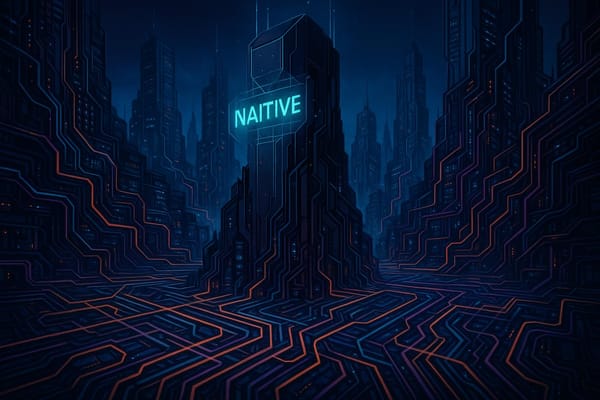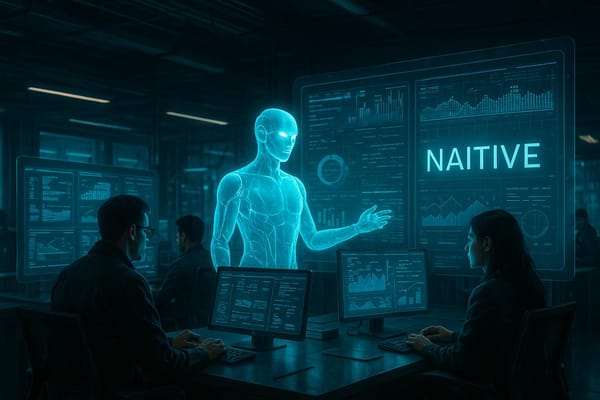Adversarial Learning in Multi-Agent Systems: Overview
Explore how adversarial learning in multi-agent systems enhances AI efficiency through competition and cooperation, transforming business operations.

Adversarial learning in multi-agent systems (MAS) is about creating systems where agents work together or compete to solve complex problems. This approach improves strategies through competition and cooperation, making AI systems more effective in real-world applications.
Key Takeaways:
- What It Is: Adversarial learning introduces competition among agents in MAS, helping them adapt and evolve strategies.
- Business Impact: Companies like NAITIVE have used this to automate 77% of support tasks, boosting customer retention by 34% and cutting costs by 67%.
- How It Works: Core methods include self-play, population-based training, and curriculum learning. Defense strategies like adversarial training and ensemble methods protect against threats like data poisoning and evasion.
- Future Trends: Expect more "Employee-as-a-Service" AI agents handling tasks like analysis and problem-solving 24/7.
Adversarial MAS is reshaping industries by improving efficiency, reducing costs, and enabling smarter automation. Keep reading to learn how these systems work and how businesses can implement them effectively.
The Emergence of Adversarial Communication in Multi-Agent ...
Main Principles of Adversarial Learning
Adversarial learning in multi-agent systems (MAS) is built around two core ideas: agency and generative synergy.
- Agency allows agents to modify their strategies dynamically based on real-time interactions.
- Generative synergy blends autonomous decision-making with generative AI, enabling agents to refine their strategies continuously through both competitive and cooperative adversarial dynamics.
Let’s dive into some common challenges in adversarial learning.
Methods and Tools
Building on foundational principles, focus on targeted training and defenses to strengthen agents against potential threats.
Adversarial learning builds upon these principles by using systematic training, analyzing attack methods, and implementing layered defenses.
Training Methods
Here are some effective ways to train agents:
- Self-Play Training: Agents compete against their own clones, refining strategies based on past outcomes.
- Population-Based Training: A group of agents evolves together, exchanging feedback to improve over multiple trials.
- Curriculum Learning: Tasks are organized from simple to complex, allowing agents to develop their skills step by step.
Attack Categories
Adversarial threats can take several forms:
- Poisoning: Feeding flawed data during training to mislead the agent's learning process.
- Evasion: Creating deceptive inputs during deployment to cause errors.
- Model Extraction: Using repeated queries to replicate an agent's decision-making process.
- Byzantine Faults: Introducing agents that act unpredictably or maliciously to disrupt coordination.
Protection Methods
Defensive strategies include:
- Defensive Distillation: Train a secondary model to smooth out predictions and detect anomalies.
- Adversarial Training: Incorporate adversarial examples into training to help agents recognize and counter attacks.
- Ensemble Methods: Use multiple models together, cross-checking their outputs to ensure reliability.
Implementation Examples
Business Uses
Practical applications show how these training and defense techniques perform in action. NAITIVE's adversarial multi-agent solutions have achieved measurable results, including:
- 67% reduction in support operation costs
- 103% boost in processing efficiency
What's Next in Adversarial Learning
As we explore advancements in adversarial multi-agent systems (MAS), it's clear that new trends and challenges are shaping the future of this field. These advancements focus on dynamic interactions and collaborative efficiencies to keep systems evolving over time.
New Developments
Adversarial learning in MAS is advancing quickly, introducing changes that influence how organizations approach AI. A notable trend is the rise of Employee-as-a-Service agents - digital workers capable of handling tasks like data analysis and problem-solving 24/7. This shift highlights the growing role of AI in streamlining operations and achieving business goals.
Implementation Challenges for US Companies
While these advancements are promising, US companies encounter several challenges when integrating these technologies. Common hurdles include complex system integration, difficulty in measuring return on investment (ROI), and the need to redesign workflows.
To successfully implement AI strategies, companies can follow a phased approach:
- Analysis: Evaluate current operations and identify areas where AI can make an impact. This step lays out a clear roadmap for adoption.
- Proof of Concept: Test AI solutions on a smaller scale to validate their effectiveness and gather measurable results.
- Full Deployment: Integrate the AI systems into existing workflows to improve efficiency and outcomes.
- Continuous Optimization: Regularly monitor system performance and make adjustments to ensure long-term benefits.
NAITIVE AI Consulting Agency internal implementation data.
Summary
Adversarial learning combines competition between agents with dynamic adjustments to tackle complex challenges.
According to McKinsey & Company's 2023 survey, businesses are increasingly using AI in areas like contact center automation (26%), personalization (23%), and customer acquisition (22%). These trends highlight the expanding role of adversarial multi-agent systems (MAS) in improving operations.
Key factors for success include:
- Integrating with current infrastructure
- Ongoing performance monitoring
- Planning for scalable expansion
These elements provide a clear framework for deploying adversarial MAS effectively.
The rise of "Employee-as-a-Service" agents hints at even greater automation potential. As adversarial MAS continue to develop, refining these strategies will be essential for driving future improvements.
McKinsey & Company, "The State of AI in 2023."
[2] NAITIVE AI Consulting Agency client case data.




